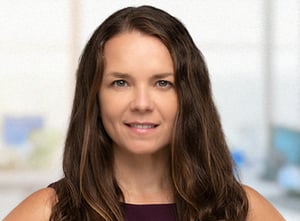The Future of Medicaid Post-PHE Unwinding
North Highland attended the 2023 National Association of Medicaid Directors (NAMD) conference in Washington, DC, led by 44 State Medicaid Directors from across the country. Joining them were approximately 1,400 participants representing the brightest leaders from industry, academia, and state, federal, community-based Medicaid leaders collaborating on how to leverage learnings, improvements, and best practices from PHE Unwinding to advance and simplify traditional eligibility practices. At the same time, we were reminded of the challenges that Medicaid recipients experience and endure from the real-life stories they shared. North Highland’s insights and takeaways from this year’s event are described below.
Incorporating New Learning and Best Practices to Improve Eligibility
We’ve proven that implementing system changes and automation that better align with policies reduces workload and improves productivity and accuracy. But it’s truly the “People who make Medicaid work.” Being more flexible and agile with how new and existing resources are allocated, coupled with these technological advances, provides an effective means to address today’s challenges - including those around Medicaid's ex-parte process. Additional learnings and best practices include:
-
Consider creative use of funding (i.e., ARPA dollars) to help motivate constituents to do things like update contact information.
-
Leverage available flexibilities, such as those included in the 1115 demonstration authority, to extend continuous eligibility for children and/or to apply for continuous eligibility for adults.
-
Examine alternative working models that incorporate the use of contractors to augment existing call center and eligibility workforces do work.
-
Use culturally sensitive member communication to improve engagement and help ensure members have the information they need.
-
Foster strong federal and state partnerships with continuous collaboration to quickly and effectively address issues and lead to innovative solutions to help improve Medicaid.
The Broad Reach and Real Impacts of Medicaid – Our Country Needs Medicaid Now More Than Ever
Medicaid continues to serve some of the most vulnerable in our communities, as evidenced by the fact that over half the children born in the U.S. receive some form of Medicaid. The Centers for Medicare and Medicaid Services (CMS) is committed to keeping people covered by Medicaid or other affordable insurance.
-
States like Georgia have implemented innovative solutions to provide Medicaid coverage to eligible Georgians ages 19-64 who have a household income of up to 100% of the Federal Poverty Level (FPL), are not otherwise eligible for traditional Medicaid, and meet the qualifying activities threshold. The Georgia Pathways to Coverage program won the NAMD 2023 Spotlight Award. Congratulations Georgia!
-
By providing continuous Medicaid eligibility to children, states help minimize coverage gaps and maintain continuity of access to program benefits, thereby improving health outcomes of beneficiaries.
-
States are planning for the re-entry of incarcerated individuals to have Medicaid coverage from day one to help reduce recidivism.
-
Medicaid is the largest payer of behavioral health services with funding for mobile crisis services helping states provide individuals experiencing mental health and/or substance use emergencies alternatives to emergency departments and law enforcement.
-
Home and community-based support provides a lifeline for families and communities, especially those with aging family members.
-
States are requesting additional time to complete PHE unwinding activities. CMS is handling these requests on a case-by-case basis.
It was inspiring to hear the fantastic work states are doing to get through the PHE unwinding, maintain continuous eligibility or healthcare coverage for members whenever possible, and address inequities to improve health outcomes. Hearing directly from young adults and their advocates about real-world experiences with Medicaid helped us understand some of the impacts policies and systems can have on members while helping us generate new and innovative ideas for how Medicaid can best meet the needs of youth and young adults.
Thank you, NAMD. And see you next year!









